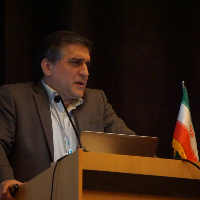Optimized Linear Programming for Ramp Metering, Case Study
Author(s):
Abstract:
Freeways have a particular role in urban transportation networks due to their high capacity compared to other facilities of lower hierarchical classification. Although these facilities do not have any at-grade junctions and are of the highest mobility and least access classification، their flow control can help general urban traffic condition. Traffic control strategies are thus of particular importance to urban transportation. Ramp metering of urban freeways and highways is one of the efficient traffic control policies that can alleviate traffic congestion by restricting on-ramp flows to the main stream. A main challenge of this policy is the determination of optimal flow rates of the on-ramps leading to optimal flow rate of the main stream. In this paper، a linear programming model is developed considering the capacity constraint of the main stream and the constraints of queue length of ramps. Although the queue length of the on-ramps increase due to the ramp metering strategy by holding up vehicles on these ramps، the travel time of the main stream as the main body of traffic whose traffic condition is of higher importance، decreases due to the increase in the speed of this stream caused by the drop in vehicle density. The main objective of this paper is the implementation of a mathematical programming model developed for a rather congested case study in Tehran; and the analysis of its challenges and impacts. This model takes into account the maximization of flow in the transportation network while flow conservation and capacity constraints are not violated. In the field survey، flow rate data of about 15000 vehicles west-bound of Shahid Hemmat highway segment from Modares freeway to Shahid Chamran off-ramp were gathered for three hours. This segment includes five on-ramps and four off-ramps whose flow rate data along with that of the main stream was collected on a Tuesday in summer 2011. The data was collected through video recording and then obtaining the necessary variables like flow rate data by re-watching the films carefully and counting the vehicles. Although very time and budget consuming، but this survey method made possible the data collection phase to be valid and reliable. Flow rates for 5 minute time intervals for all the ramps and the main stream were obtained to comprise part of the research data base. Capacity، as a model parameter، was predicted for the segment under study. Results of the mathematical programming optimization model indicate that level of service of the segment under study increases from F to E and that the speed in the main stream increases between 18 and 24 kilometers per hour and that travel time in this segment has a decrease of nine minutes. Results of the optimization model indicate that freeway traffic performance can be optimized by careful management of on-ramp monitoring and control realized through ramp metering strategy، emphasizing quantitatively and scientifically the importance and necessity of detailed traffic data and its analysis for the betterment of traffic conditions through merely management techniques which do not require much time or budget to use the existing facilities more efficiently.
Language:
Persian
Published:
Quranic Knowledge Research, Volume:14 Issue: 3, 2015
Pages:
147 to 158
https://magiran.com/p1365896
مقالات دیگری از این نویسنده (گان)
-
A Prediction of Vehicles Entering The Traffic Cordons, Using Machine Learning (Case: Tehran City)
Mahmoudreza Nateghi, Sepideh Shami, Amirreza Mamdoohi *
Road journal, -
Scenario creation of Shared Autonomous Vehicles Penetration Rate, a Quantitative Environmental Analysis
A. R. Mamdoohi *, A. Rahmani
Sharif Journal Civil Engineering, -
Strategies for prevention of accidents caused by human factors
Mohammad Purshams *, Reza Javadian, M. Saffarzadeh, Eskandar Momeni
Traffic Management Studies, -
Modeling crash frequencies by transportation mode using micro/macro level variables
Nemat Soltani, , Ali Naderan, Navid Soltani *
Journal of Civil Engineering, Winter 2021



